11 classic representations of sales & marketing in film & television
Filmmakers have romanticized the sales profession time and time again. Cinematic portrayals have deified, humanized, vilified and lionized the...
8 min read
Admin : Mar 12, 2024 6:16:29 AM

What is the best way to accurately map out your buyers’ decision making process? Having a deep understanding of the buyer persona is fundamental to any good marketing strategy. For ABM however, drawing the clear image of the buyer takes a more refined and sophisticated approach. In this article, you will learn how leading tech enterprises do buyer persona creation.
A cornerstone in any account-based strategy is adequate market-research and customer profiling. The very first step in the ABM process - the creation of a target list - presupposes that you have created an ICP - an ideal customer profile, which goes hand-in-hand with a deep understanding of both the market and the innate needs-wants-desires and decision making processes of the individual buyers. And we have arrived at buyer personas.
Unfortunately for account-based marketers, the majority of buyer persona-creating instructions are slim. They are designed for profiling personas for simpler, small-consideration buying decisions. Most of our B2B sales cycles, on the other hand, involve buying teams of 5-13 individuals and can last up to 14 months.
As an account-based professional looking to market complex tech solutions, you have to be aware of not just the personal and psychographic traits and stereotypes, but the typical internal evaluation processes and politics at play in your buyers’ organisations. Let’s face it, most profiling tools and advice just don’t live up to this complex task.
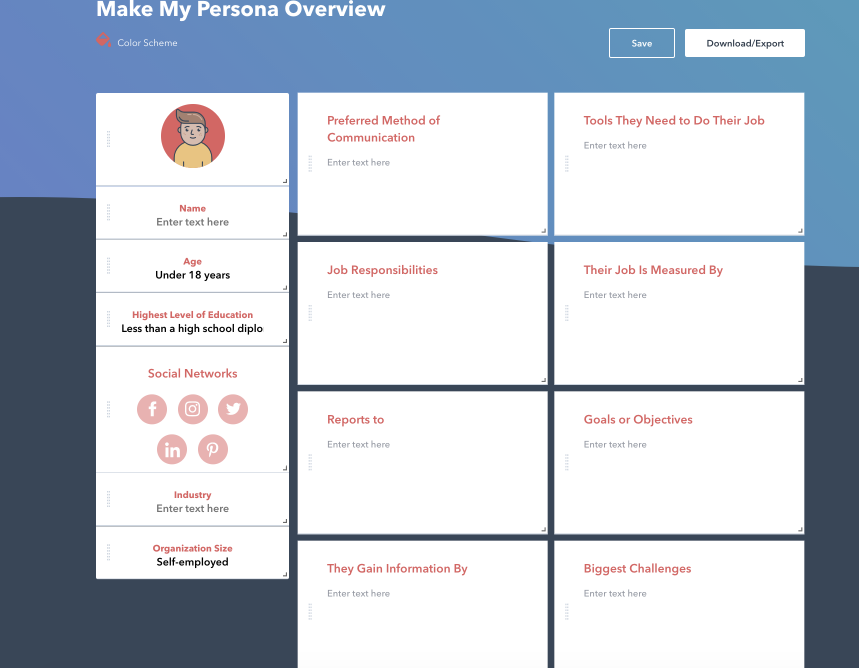
A buyer-persona creation template. Designed for B2C action, but unfit for modeling multi-buyer, complex B2B buying-scenarios - source: hubspot.com
A common shortcut that can sometimes be tempting for marketing is to get insight from sales, and to a lesser extent, customer support. While these are worthwhile conversations, they are inadequate in themselves to draw up a solid storyboard about how our accounts (and people in those accounts) go from the pre-awareness phase to signing the contract.
Sales has a different perspective than what we need for creating buyer personas. Salespeople are usually good at recognizing buyer intent and mapping out potential obstacles. But the biggest piece of the puzzle that they miss is all the interaction that happens before sales gets involved. As a marketer, you obviously need to be acutely aware of what’s going on in the earliest stages of discovery.
Fortunately, there is a great method out there; one that has been tried and tested over decades and one that Infinityn has adapted and tuned to make it “account-based-marketing-friendly”. (It is this method that we use with clients as part of our Account-based Intelligence service - as well as for our internal projects.)
The credit for inventing the framework goes to Adele Revella, who explains the process in her book Buyer Personas - how to gain insight into your customers’ expectations. It is a qualitative approach that builds on conducting one-on-one interviews with buyers.
In the remainder of this article, we’d like to help you get the essence of the method to help you gain further insight into how your buyers make decisions.
The foundations of the framework go back to storytelling. Yes, storytelling… which surprises many people, but the “art of stories” is actually in very close relationship to this type of qualitative research.
One may have the impression that market research is largely a statistical affair, where the right questions should be asked, the answers gathered and math be used to interpret the data.
It is often assumed that qualitative research works much the same way - with the exception that fewer and open-ended questions are being asked. This allows room for the respondents to elaborate on a topic, giving deeper insight into individual and organizational motivations.
Revella’s approach, and subsequently our Account-based Intelligence process involves asking our interviewees just a few scripted questions. What we are aiming for instead, is to get the stories that go from how the challenge or need for our solution had surfaced, all the way to considering different options and dealing with politics and finally choosing a vendor.
There are very good reasons why we want stories instead of asking specific questions. Stories have the ability to transfer the tangential and often unspoken, subconscious aspects of events. Surfacing these details makes a huge difference.
Rivella gives a brilliant example: a client was interviewing the persona who was the primary user of a software product. This persona was working in the lower ranks of the organizational ladder. What emerged through stories and subtle hints from these stories was that this persona was actually fighting for recognition from the C-suite. The persona felt she was being left out of important decisions and wanted significance.
Now, if something like this were asked outright in an interview, such as “what are your ambitions?” - there is a very good chance that the respondent wouldn’t have uncovered the desire for more significance, the feeling of being left aside because people don’t usually open up about feelings and desires like this to stranger interviewers. She would have most likely given a generic answer such as “I want to advance professionally and contribute more” - which is how most people react to questions like this in a business setting. In the right setting, a storytelling one, with delicate probing questions, insight like this can surface.
This understanding armed the ABM team with ammunition for content ideas: they created an internal audit aimed at uncovering vulnerabilities in the administrative process (which the vendor’s software could resolve). The account manager then helped her create a report for the C-suite, which gave her a good reason to approach them. The C-suite then wanted a presentation on the audit’s findings from the persona, whose significance was suddenly lifted.
This case goes on to prove that in Account-based Intelligence, it’s not about asking the right questions. It’s about uncovering deeper layers of motivation and truth inside of customer-stories. The question is: how?
As you might imagine, you can’t just call a persona and say “tell me your story”. It just won’t go the way you’d need it to. Our framework has specific features that make the storytelling happen. Here are the important ingredients:
The interview (or conversation, to frame it more appropriately) can be kicked off by asking the buyer to “take me back to the day when the need for [your solution-category] first surfaced in conversations or at meetings”. The phrasing “take me back to the day” sets the ambience and almost always gets the buyer to go into storytelling mode. In case they don’t, and just start listing facts, we would gently steer them to talk about the context, what actually happened organizationally or inside the department, who was having what sort of challenges, arguments, political plays etc.
You would get this information through probing questions. If they are mentioning something you’ll want to come back to later, note the exact phrase they used which triggered your interest. When they pause, you can say: “...you mentioned [the phrase they used] - this really caught my attention.” and you can poke deeper with a why/who/what exactly.../when/where question.
What can kill insight is the assumption that “we already know what they’re going to say” and thus NOT asking about experiences, opinions etc. For this reason, the best interviewers are ones who are not inherently familiar with the product or the account. With a beginner's mindset and curiosity, these people will assume nothing and inquire about everything.
Oftentimes, going back to the basics and probing for things that are assumed to be known reveals changes and new insight. Probing, or going deeper into customers’ stories very much pays off, as you will see in the following case.
A marketing automation platform provider we’ve worked with always had assumed that the main reason a company would want to opt for an automation platform was revenue growth. Earlier market research even confirmed this and it’s the argument that most competitors were also using.
After a few account-based intelligence interviews, it became clear that one buyer persona in particular was much more concerned about cutting administrative costs with the back-office automation capabilities of the software. What an insight! This was a win to be celebrated, because armed with this knowledge (which was congruent with how this persona used the platform) the marketing team could have started to create content that would convert better.
But, there was more to it: when probing deeper and asked to put this in an everyday setting, the persona’s story became even more vivid. This persona told us that he often chipped away hours from Saturdays to do repetitive, administrative tasks. That’s an incredibly strong pain point and as a marketer, you’d be at the edge of your seat when uncovering something like this. It just screams for some strong content (missing kids’ soccer games because of work!?) and gives loads of ammunition to copywriters.
It takes about 20-30 minutes to conduct the average conversation, but often it goes longer because the buyer enjoys it so much.
Once you have led the buyer through the conversation, it is time to have the recordings transcripted. From the transcripts, you can highlight and extract key phrases. Word-for-word, exactly as they said them. These give clues and answers to the Rings of Buyer Insight. We use 6 rings at Infinityn, Revella uses five. They are:
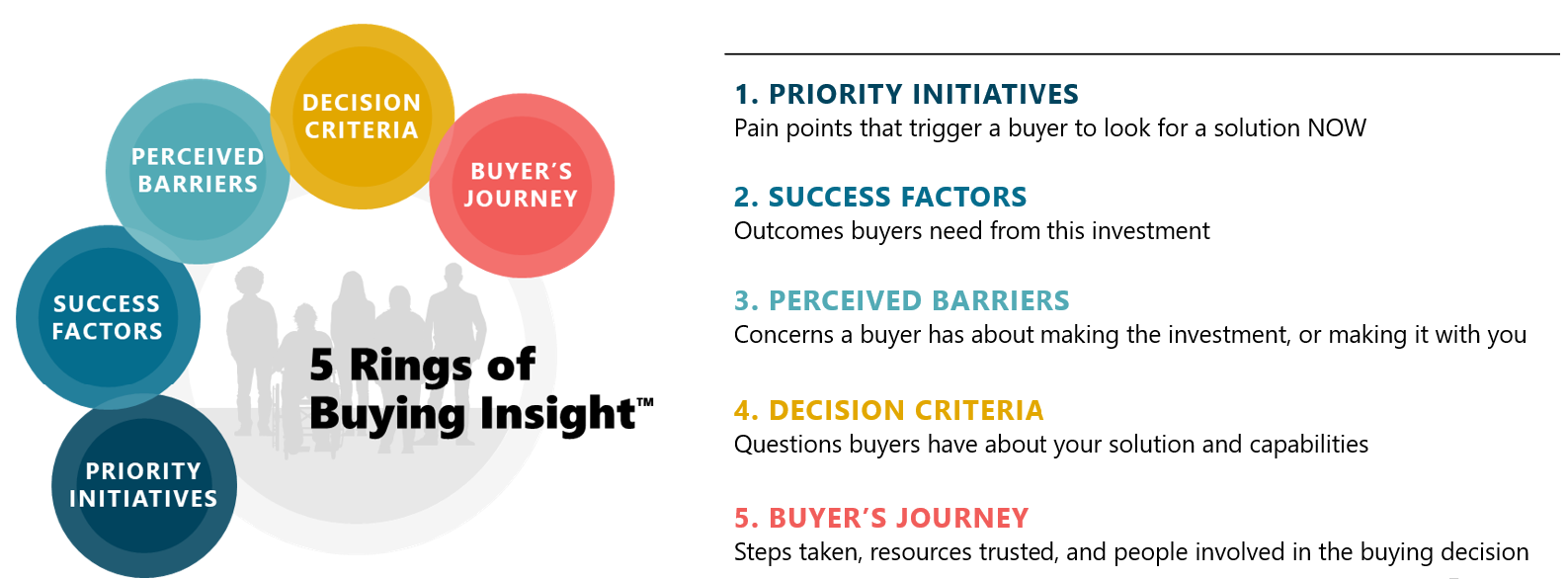
Yes.
Conducting effective buyer persona research and interpreting the data to come up with relevant messaging and content ideas is an art and science that requires practice. For our clients who want to go it alone, we advise learning by having trial runs either internally, or with lower-priority clients/personas where the consequence of coming up short is low.
Using a whitelabel partner with experience in buyer persona intelligence
- takes the burden out of setting up interviews;
- saves a great deal of internal resources by not having to conduct them
- frees marketing from mining the transcripts for insight for analysis.
The interviews are all recorded and transcribed (unless the buyer disallows), so not just the insight, but the “raw data”, the recordings and transcripts are available afterwards.
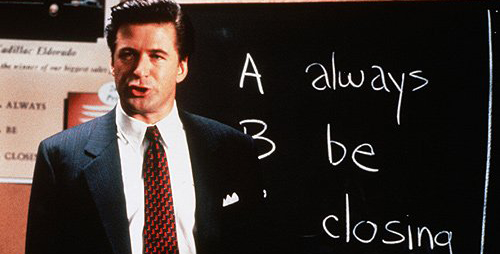
Filmmakers have romanticized the sales profession time and time again. Cinematic portrayals have deified, humanized, vilified and lionized the...

What’s the philosophy behind the technology of the most successful ABM programs? Answering this question was not the original intent when we set out...
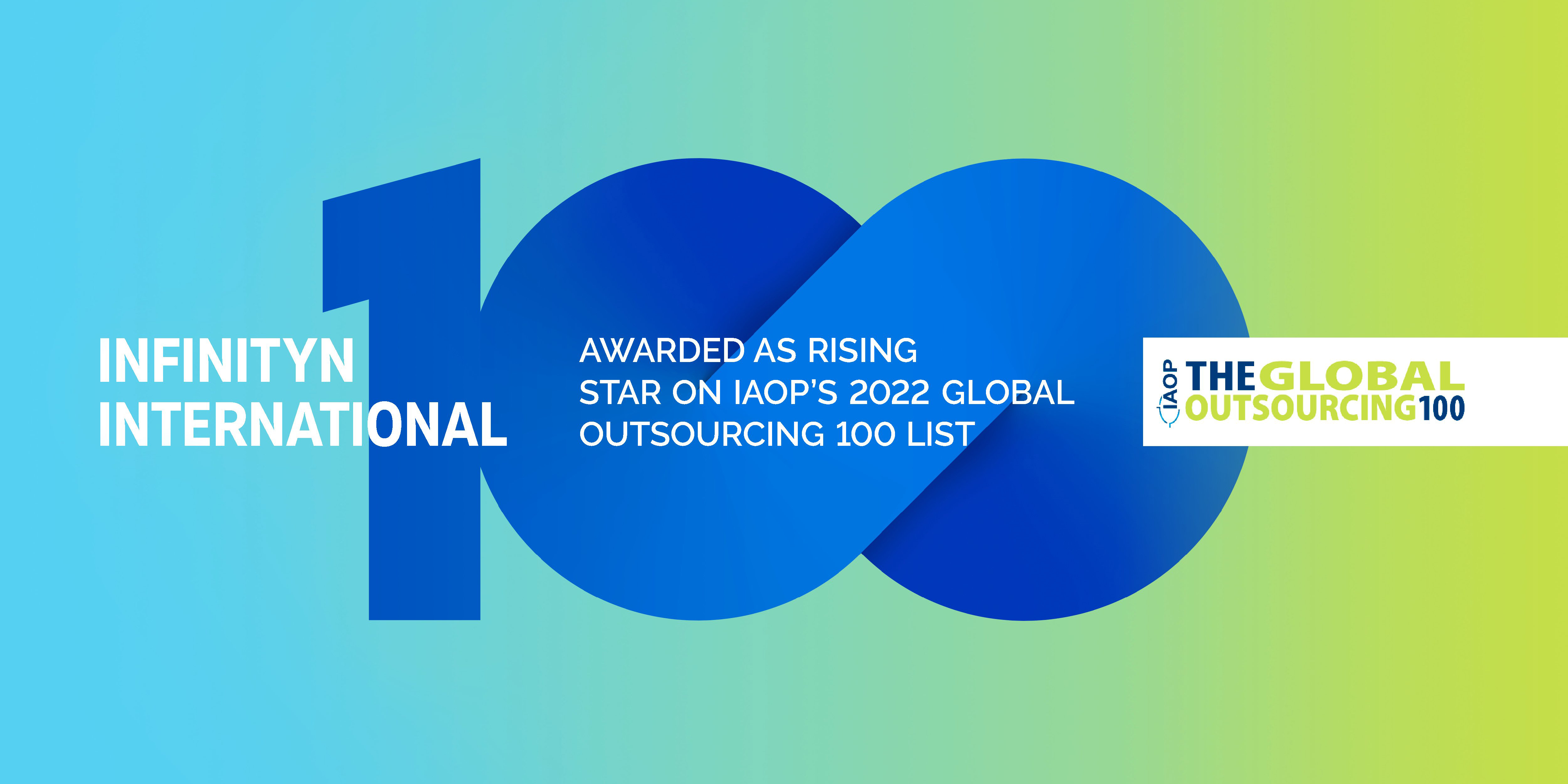
A new business model for outsourcing enterprise growth activities: Growth Process Outsourcing! It’s no news that outsourcing is a red-hot trend....

Helping your future customers advance from RPA initiative to great ROI By Kyle Hansen & Yuriy Koshulap

Marketing goes beyond promotion. Marketing is creativity, profound planning, understanding of your audience, analysing data – especially nowadays,...

Account-based marketing has been all the rage in the B2B world with big promises, new lingo, new buzzwords. We’ve been finding that it isn’t always...

Growth process outsourcing is BPO for complex sales and marketing processes. Business process outsourcing (BPO) is a familiar term for most in the...

What we call agile account-based marketing (AABM), is a newly emerging discipline. As such, the industry of marketing service providers - agencies...
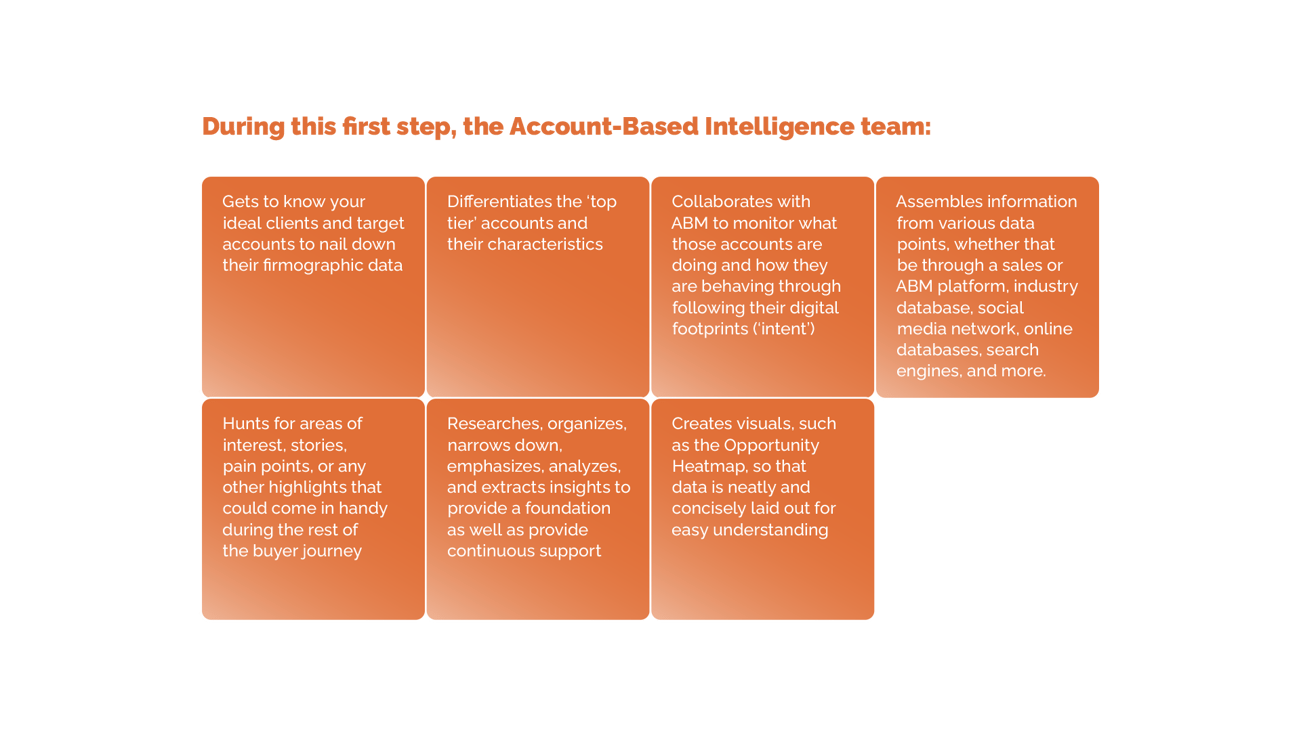
“Every company wants to increase revenue.” That’s a pretty safe and agreeable statement to make.

How does a software-solution supplier win a massive deal against a huge global competitor, who is already in the contracting phase with the buyer? It...
One of the most important functions within a productive outbound machine is Sales Development, the process of filling your pipeline with qualified...